It’s both easy to set up a chess board and make a small mistake that would technically be the wrong way to play. This page covers the exact Chess Board set up with visuals with step-by-step instructions on how to set it up the right way.
Last Updated: November 12th, 2021
How To Set Up a Chess Board
Here’s how to set up a Chess board the right way.
- Gather Board and Pieces
- Position The Board
- Set Up The Rooks
- Set Up The Knights
- Set Up The Bishops
- Set Up The King and Queen
- Set Up The Pawns
Step 1. Gather Board and Pieces
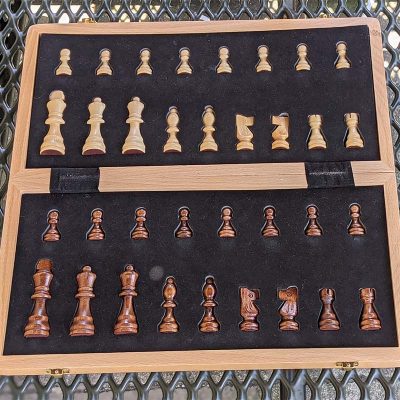
First, make sure you have all the pieces to play Chess. Both White and Black should have the following pieces:
- 8 Pawns
- 2 Rooks
- 2 Bishops
- 2 Knights
- 1 Queen
- 1 King
After making sure you have all the pieces, it’s time to position the Chess board.
Step 2. Position The Board
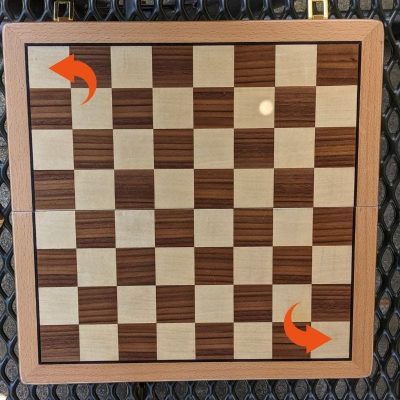
This is a common mistake that’s made when setting up the board.
Position the board so that the bottom right corner square on the board is a light square for both players. Once that’s done, it’s time to set up the pieces.
Step 3. Set Up The Rooks
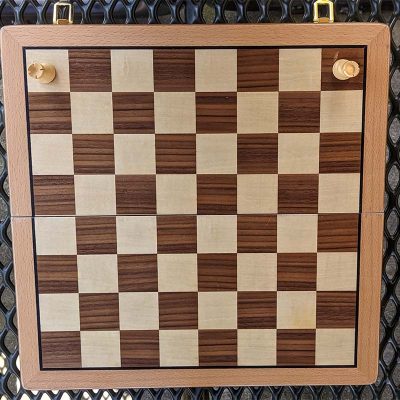
Each Rook goes on opposite ends of the board. The Rooks should be on a1 and h1 for White and a8 and h8 for Black.
Rooks are classified as a major piece and are very important in your overall strategy. Rooks become exponentially more powerful when connected, this is why castling in Chess is important, not only to protect your King but to connect your Rooks.
For more information, read the guide on how to use Rooks in Chess. The next piece to set up are the Knights.
Step 4. Set Up The Knights
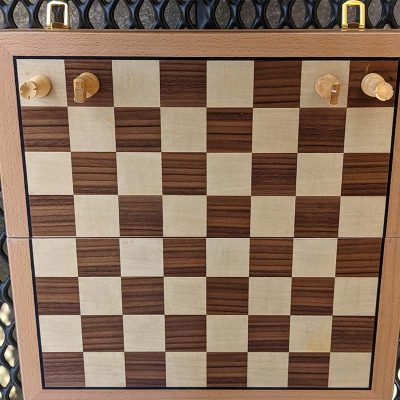
Place a Knight next to each Rook. The Knights should be on the b1 and g1 squares for White and the b8 and g8 squares for Black.
For more information, read the guide on how to use Knights in Chess.
Step 5. Set Up The Bishops
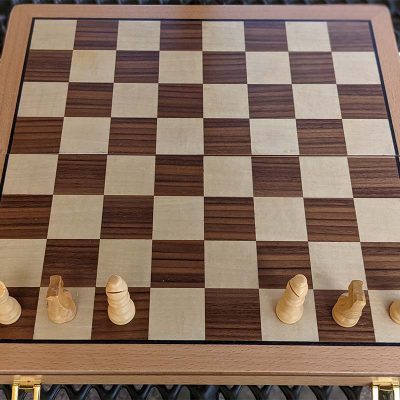
Next, place a Bishop next to each Knight on squares c1 and f1 for White and c8 f8 for Black. One Bishop will be on a dark square and the other Bishop will be on a light square.
Knowing which Bishop is more powerful depending on the position of you and your opponents pieces after the opening is important so you can keep your powerful Bishop and maybe sacrifice the other Bishop. For more information, read the guide on how to use Bishops in Chess.
Step 6. Set Up The King and Queen
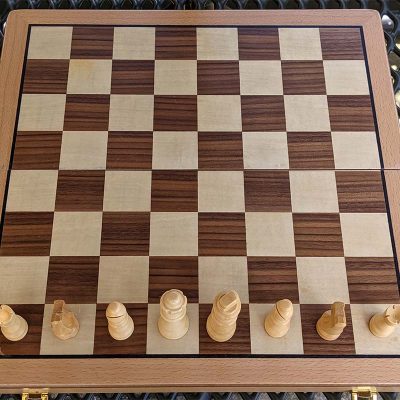
Now let’s position the King and Queen on the right squares.
The Queen should be positioned on the same colored square of the pieces on that side. So if you have the White pieces, the Queen goes on the light square. For Black, the Queen goes on the dark square.
For more information, read the guide on how to use Kings in and Queens Chess.
Step 7. Set Up The Pawns
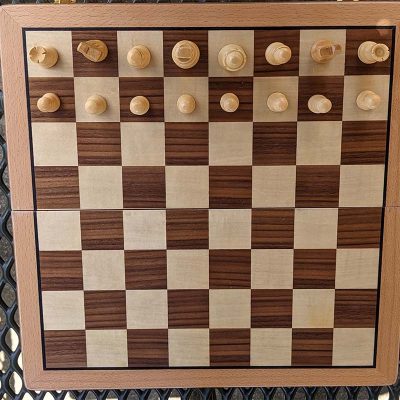
Now all that left to set up are your pawns. The eight pawns should be placed on the next rank in front of all your major and minor pieces.
Learning pawn structure is crucial to having the advantage in the end game. For more information, read the guide on how to use Pawns in Chess.
Now you have the full Chess Board starting position to begin playing.
Common Mistakes
There are a couple common mistakes that are made when setting up a Chess board.
Not Having The Board In Correct Position
Before setting up the pieces, make sure the bottom right corner of the board is a light square from both players perspective.
King and Queen Mix-Up
This is the most common mistake when setting up the pieces. Luckily, there is an easy way to remember which square the Queen goes on. The Queen always goes on same color square of which color pieces you’re playing with. If you’re playing with the White pieces, you’re Queen should go on the light square, and King on the dark square, and vice-versa.
Not Having Another Queen Piece
What if you don’t have another Queen piece? Not all Chess Boards come with additional Queen pieces. If you don’t have more Queens, what should you do if you promote a pawn and still have your Queen on the board?
It’s common in casual play to use a Rook and flip it upside down. An upside-down Rook can represent a Queen.
I hope this guide on the proper Chess Board set up process helped you. Now that you set up the board correctly, it’s time to learn some basics. Be sure to go reference the guide, start here, which is designed for beginner Chess players. You can also go forward to learning how how each of the Chess Pieces move.


